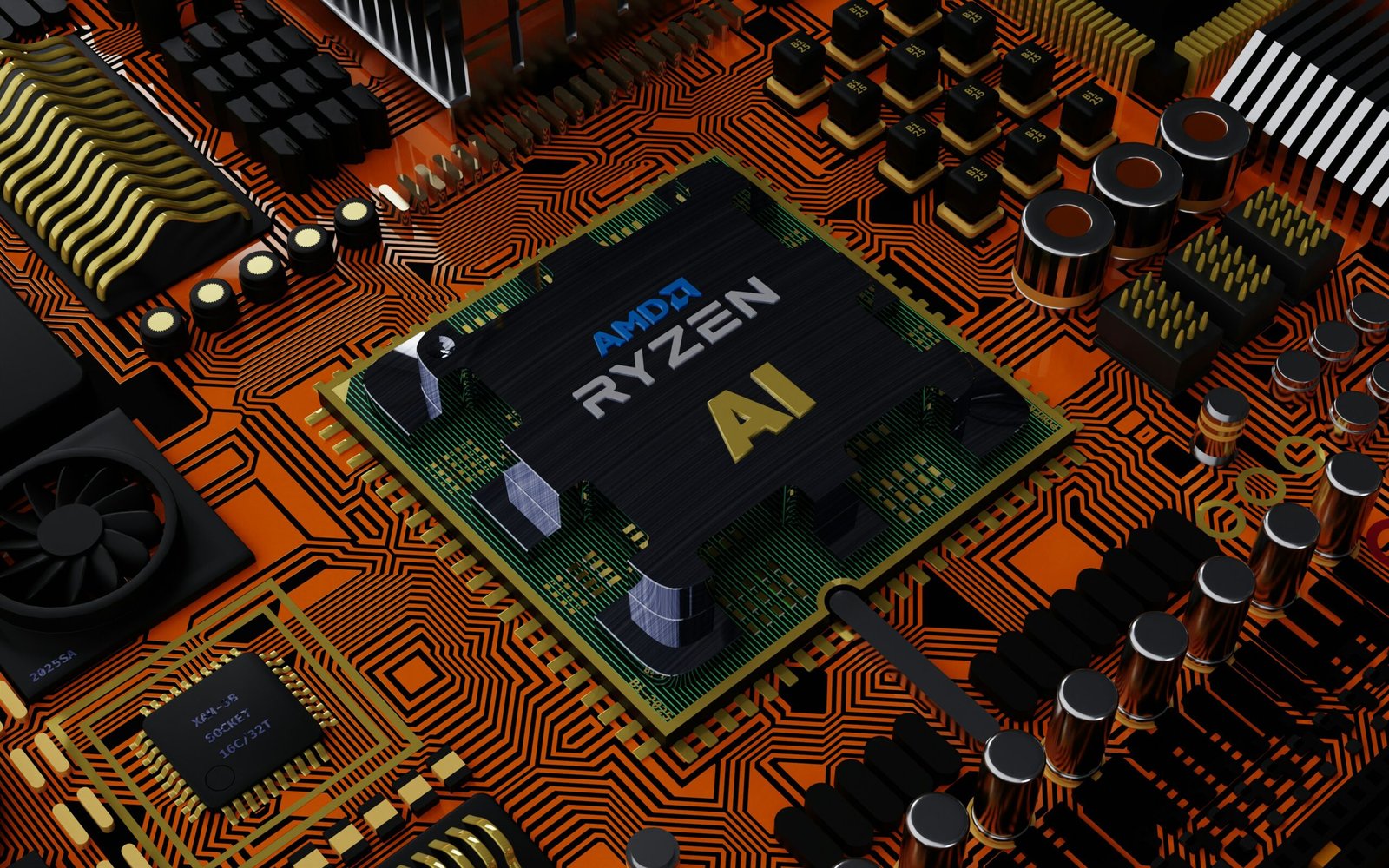The Future is Now: 5 Reasons Why Edge Computing is Essential for Your Business
 Photo by BoliviaInteligente on Unsplash
Photo by BoliviaInteligente on Unsplash Introduction to Edge Computing
Edge computing represents a significant shift in the way data is managed, processed, and delivered from millions of devices worldwide. Unlike traditional cloud computing, which relies heavily on data centers located far from the end user, edge computing brings computation and data storage closer to the sources of data. Its key components include edge devices, edge nodes, and edge gateways, which work together to ensure low latency and real-time data processing.
The evolution of computing from centralized data centers to decentralized edge networks marks a pivotal transformation in the tech landscape. In traditional cloud computing models, data must travel long distances to be processed in a central data center, which can result in latency issues and delays. Edge computing mitigates these challenges by processing data at or near the source, significantly reducing latency and enhancing the performance of applications and services.
This paradigm shift is crucial in today’s fast-paced technological landscape, where businesses demand real-time analytics, seamless connectivity, and rapid data processing. Industries such as manufacturing, healthcare, and retail are witnessing the transformative impact of edge computing by optimizing operations, improving customer experiences, and enabling new business models. The proximity of edge computing to data sources ensures faster decision-making, reliability, and increased efficiency, which are essential for maintaining competitive advantage.
In summary, edge computing is not just a trend but a transformative approach to data processing that addresses the limitations of traditional cloud computing. By bringing computation closer to the data source, edge computing provides numerous benefits, including reduced latency, enhanced performance, and real-time analytics, making it essential for any forward-thinking business looking to thrive in the digital age.
Reason 1: Enhanced Speed and Reduced Latency
Edge computing brings a significant advantage to businesses by markedly reducing latency. By processing data closer to its source, edge computing decreases the time it takes to transfer data to distant central servers. This reduction in latency translates into faster data processing and response times, which are critical for businesses that rely on real-time data analysis and instant decision-making.
For example, the retail industry benefits greatly from edge computing as it allows for rapid processing of transaction data at various points-of-sale. This results in swift updates to inventory levels and real-time pricing adjustments. Customers experience improved service with quicker checkouts and enhanced personalization, while the business gains by better managing inventory and increasing operational efficiency.
In the manufacturing sector, edge computing is revolutionizing operations through the implementation of smart factories. Machines equipped with sensors can process data locally to detect and predict equipment failures before they happen. This predictive maintenance capability minimizes downtime and keeps production lines running smoothly, ultimately increasing productivity and reducing costs.
The healthcare industry is another sector that reaps the rewards of edge computing. For instance, medical devices that monitor patients can process data locally, providing doctors with immediate health alerts. This timely information is crucial for delivering prompt care that can save lives. Hospitals implementing edge computing enjoy not only improved patient outcomes but also optimized resource allocation and reduced operational costs.
Moreover, in the realm of autonomous vehicles, edge computing ensures safer and more efficient transportation. By processing data from sensors and cameras in real-time, vehicles can make instantaneous decisions on navigation and obstacle avoidance. This decreases the latency in response times, crucial for preventing accidents and improving overall traffic flow.
In essence, enhanced speed and reduced latency through edge computing support faster decision-making, better customer experiences, and heightened efficiency across various industries. By incorporating edge computing, businesses are well-positioned to meet the demands of a rapidly evolving technological landscape.
Reason 2: Improved Reliability and Resilience
Edge computing is fundamentally transforming how businesses approach system reliability and resilience. By decentralizing data processing and moving it closer to the source, edge computing minimizes reliance on a central server. This decentralization significantly reduces single points of failure, thereby enhancing overall system reliability. The strategic placement of edge nodes ensures that even if one node fails, others can seamlessly take over its tasks, thereby maintaining system integrity and delivering uninterrupted services.
This paradigm shift is particularly impactful in critical applications where downtime can have severe consequences. In healthcare, for instance, the reliability of real-time patient monitoring systems is paramount. Edge computing ensures continual operation by processing vital data locally, even if the central system experiences a failure. This not only prevents disruptions in patient care but also ensures that crucial health data remains accessible and actionable at all times.
In industrial automation, edge computing enhances the resilience of manufacturing systems. By processing data on-site, industries can maintain operational efficiency and responsiveness. Take the example of a smart factory where machinery performance data is analyzed in real time at the edge. If a central server is compromised, the edge devices can continue to monitor and control the manufacturing processes, thus avoiding costly downtimes and ensuring uninterrupted productivity.
Smart cities also benefit immensely from edge computing’s resilient architecture. Urban infrastructures, such as traffic management systems and public safety networks, rely on constant data flows. Edge computing ensures these systems remain functional during extreme conditions, such as natural disasters or cyber-attacks. For example, a city’s traffic lights may continue to operate efficiently even if the central server is down, thereby preventing chaos on the roads.
Case studies across various sectors further underscore the reliability and resilience afforded by edge computing. One notable example is a global logistics company that implemented edge computing to enhance its delivery network. By processing data locally at each hub, the company significantly improved its package tracking and delivery times, even during peak periods like holidays, thereby markedly boosting its resilience and customer satisfaction.
In summary, edge computing’s ability to decentralize data processing is a game-changer for improving system reliability and resilience. This innovation is crucial for critical applications where continuous operation and robust performance are non-negotiable.
Reason 3: Optimized Bandwidth Usage
Edge computing plays a pivotal role in optimizing bandwidth usage, which is becoming increasingly essential for businesses, particularly those with substantial IoT deployments. By processing data locally at the edge of the network rather than transmitting all raw data to a centralized server, edge computing minimizes the bandwidth demand on the core network infrastructure. This approach ensures that only essential and pre-processed information is sent to the central servers, significantly reducing the volume of data traffic.
This optimization translates directly into cost savings. Transmitting extensive datasets over long distances can be an expensive affair, particularly for businesses managing a vast array of IoT devices that continuously generate substantial amounts of data. By filtering out redundant or unnecessary data and only sending crucial information, edge computing helps cut down on data transmission costs. This method is especially beneficial in scenarios where real-time data analysis is crucial, as it allows businesses to leverage immediate insights without enduring high latency due to congested network pathways.
Beyond cost savings, optimized bandwidth usage facilitated by edge computing can drastically enhance the overall efficiency of network resources. By reducing the strain on central servers and the broader network, businesses can ensure more consistent performance and reliability across their digital infrastructure. This is particularly critical for industries that rely heavily on uninterrupted connectivity and real-time data processing, such as healthcare, finance, and manufacturing. In these sectors, maintaining optimal bandwidth usage can support critical operations and ensure that services remain resilient and responsive.
Therefore, the ability to optimize bandwidth via edge computing presents a substantial advantage for businesses. It alleviates the pressure on network resources, cuts operational costs, and improves the overall efficiency of data handling and processing. This not only supports current operations but also positions businesses to scale their digital ecosystems more effectively in the future.
Reason 4: Enhanced Security and Privacy
Edge computing offers significant advantages in terms of security and privacy, which are critical considerations for modern businesses. One of the primary benefits of edge computing is the reduction in the risk of data breaches. By processing data locally, closer to where it is generated, sensitive information does not have to traverse potentially insecure or unreliable network paths to reach centralized data centers. This localized data processing minimizes the exposure of sensitive data to external threats, thereby bolstering overall security.
In addition to mitigating the risk of data breaches, edge computing aids businesses in meeting stringent regulatory requirements related to data sovereignty and privacy. Regulations such as the General Data Protection Regulation (GDPR) mandate that data must be stored and processed within specific geographic regions. By leveraging edge computing, companies can ensure that personal data remains within the requisite jurisdiction, facilitating compliance with these regulations and avoiding potential fines and penalties.
Implementing robust security measures at the edge can further protect sensitive information. Measures such as encryption, multi-factor authentication, and regular firmware updates can be employed to enhance the security of edge devices. Additionally, advanced threat detection technologies such as intrusion detection systems (IDS) and behavioral analytics can be integrated into edge networks to identify and respond to potential security threats in real-time.
Businesses can also implement strong access control mechanisms to restrict unauthorized access to critical data. By deploying edge gateways that enforce strict authentication protocols, organizations can ensure that only authorized personnel have access to sensitive information. This layered approach to security not only protects data at the edge but also enhances the overall security posture of the organization.
Through the strategic deployment of edge computing, businesses can significantly enhance their security and privacy measures, providing a robust framework for protecting sensitive information and ensuring regulatory compliance. As cybersecurity threats become increasingly sophisticated, leveraging edge computing as part of a comprehensive security strategy is essential for safeguarding critical business assets.
Reason 5: Scalability and Flexibility
Edge computing provides unparalleled scalability and flexibility, which are crucial attributes for modern businesses aiming to thrive amidst rapidly changing market dynamics. Unlike traditional cloud computing models that depend on centralized data centers, edge computing decentralizes processing power. This decentralization allows businesses to deploy, scale, and manage applications and services closer to the data source, significantly reducing latency and increasing responsiveness.
One of the key advantages of edge computing is its ability to adapt to fluctuating demands. For instance, businesses experiencing a sudden surge in online orders or encounters with unexpected system loads can quickly scale their operations up or down without extensive infrastructure overhauls. Edge devices and solutions can be rapidly deployed as needed, offering a more dynamic and resilient approach to managing workloads. This ability to scale elastically ensures that resources are allocated efficiently, which in turn optimizes operational costs and enhances the user experience.
Real-world applications of edge computing exemplify its scalability and flexibility benefits. For example, in the retail sector, edge devices are used to process transactions locally during peak shopping periods, ensuring that customer experiences remain smooth and uninterrupted. Similarly, in manufacturing, smart factories leverage edge computing to perform predictive maintenance, which helps in anticipating equipment failures and scaling production processes optimally. This not only enhances productivity but also reduces downtime and maintenance costs.
Moreover, the flexibility of edge computing extends to enabling new business models and opportunities. Companies can easily integrate edge solutions with existing infrastructure, thus fostering innovation without the burden of significant capital expenditure. By providing a robust and adaptable foundation, edge computing empowers businesses to react agilely in today’s fast-paced environment, ensuring they stay competitive and responsive to market demands.
Implementation Considerations
As businesses contemplate the transition to edge computing, a strategic evaluation of several critical components is imperative for seamless implementation. First and foremost, an assessment of the existing infrastructure is essential. Companies must determine whether their current hardware and network capabilities can support the additional demands of edge computing. This involves examining bandwidth, latency, and data storage capacities.
Integration challenges are another significant consideration. Legacy systems may need to be updated or replaced to ensure compatibility with edge solutions. This process often requires a careful balancing act to maintain operational continuity while integrating new technology. It’s crucial to plan for potential downtime and have contingency strategies in place.
Choosing the optimal edge solutions is perhaps the most pivotal decision. Organizations should pinpoint their specific requirements, whether it’s enhanced data processing, real-time analytics, or improved speed and efficiency. Equally significant is the selection of hardware and software that align with these needs. Given the variety of edge computing solutions available, businesses might opt for scalable and customizable options to future-proof their investments.
The significance of partnering with experienced vendors cannot be overstated. Collaborating with industry experts can provide invaluable insights and support, ensuring a smoother transition. Vendors with a proven track record can offer tailored solutions and help navigate potential pitfalls, reducing the risk of implementation failures.
To facilitate a successful edge computing implementation, businesses should adhere to a succinct roadmap: Firstly, conduct a comprehensive needs assessment. Secondly, evaluate and upgrade existing infrastructure where necessary. Thirdly, choose tailored edge computing solutions. Fourthly, ensure a phased integration approach to minimize disruption. Finally, engage with experienced vendors for continued support and optimization.
Conclusion and Future Outlook
The integration of edge computing into modern business operations cannot be overstated. As we’ve explored throughout this blog, edge computing brings transformative benefits that address current technological and operational challenges. By reducing latency, enhancing data processing efficiency, and minimizing bandwidth usage, businesses can achieve faster and more reliable decision-making processes. This positions companies to be more responsive and adaptive to real-time data, ultimately leading to improved customer experiences and operational effectiveness.
Looking ahead, the future of edge computing is poised to expand its influence across various industries. In manufacturing, we anticipate a surge in smart factories leveraging edge computing to optimize production lines and predictive maintenance. The healthcare sector stands to benefit tremendously as edge computing facilitates advanced patient monitoring systems and real-time data analytics, improving patient outcomes. Retail businesses are already exploring the potential of edge computing to create more personalized shopping experiences and streamline supply chain management.
Moreover, the advent of technologies such as 5G will further propel the capabilities of edge computing, enabling unprecedented connectivity and data processing capabilities at the network’s edge. Innovations in artificial intelligence (AI) and machine learning (ML) algorithms will also amplify the value derived from edge computing solutions, making them more intuitive and capable of handling complex tasks autonomously.
It is imperative for businesses to recognize the competitive advantage that edge computing can offer. By strategically incorporating edge computing into their operations, organizations will not only stay abreast of technological advancements but also pioneer new business models and revenue streams. As digital transformation evolves, edge computing will undoubtedly play a crucial role in maintaining agility and fostering innovation in an increasingly data-driven world.
To stay ahead, businesses should begin exploring and investing in edge computing technologies now. By doing so, they can ensure they are well-prepared to harness the full potential of this paradigm shift and remain at the forefront of their respective industries.
















Tidak ada komentar